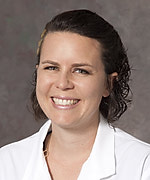Children with minor head trauma who have altered mental status but no other PECARN risk factors have a very low risk of serious brain injury – and none in this large study required neurosurgery.
The Clinical Dilemma
Every day, emergency physicians face a common dilemma: a child comes in after hitting their head and seems “not quite right” – maybe they’re more drowsy than usual, a bit confused, or their Glasgow Coma Scale (GCS) score is 14 instead of 15. But they don’t have any other concerning signs from the PECARN decision rules (no vomiting, severe headache, scalp hematoma, or other predictors).
Question: Should you get a CT scan?
In 2009, the Pediatric Emergency Care Applied Research Network (PECARN) published 2 age-specific prediction rules that help identify children with clinically important traumatic brain injury (ciTBI) [1]. Altered mental status (AMS) was one of 6 PECARN predictors associated with a higher risk of ciTBI.
A follow-up publication focused on specifically the subset of patients with AMS to help try to address the clinical dilemma of whether to obtain a CT scan [2].
What did the study results show?
For all patients with AMS as their ONLY PECARN-defined risk factor (n=1,245), only 1.4% had a ciTBI (none underwent neurosurgery).
| Clinical Finding | % of Patients with Clinically Important TBI |
|---|---|
| Any altered mental status (AMS) | 1.4% (17/1245) |
| • GCS 14 only (no other sign of AMS) | 1.0% (1/97) |
| • GCS 15 + at least 1 other sign of AMS (e.g., agitation, somnolence, slow responses) | 1.2% (12/1035) |
| • GCS 14 + at least 1 other sign of AMS | 3.5% (4/113) |
Altered mental status (AMS) was defined as any one of the following:
- GCS 14
- Agitation
- Somnolence
- Repetitiveness
- Slow speech at ED presentation
ciTBI was defined as any one of the following:
- Death
- Neurosurgery
- Intubation >24 hours
- Hospitalization ≥2 nights associated with TBI on CT
Clinical Implications
For children with GCS 14 alone OR GCS 15 with mild confusion signs:
- Risk of serious brain injury is very low (around 1%)
- Consider shared decision-making with parents about observation in the ED versus CT
- Close monitoring until symptoms resolve may be appropriate
For children with GCS 14 AND other confusion signs:
- Higher risk (3.5%) warrants a lower threshold for CT scanning
Why this matters for emergency physicians and pediatricians
This study provides the first detailed analysis of children who have altered mental status as their only PECARN risk factor. Previously, any altered mental status triggered consideration for CT scanning. These findings suggest that:
- Shared decision-making tools can help families understand options.
- Not all altered mental status carries the same risk.
- Observation may be appropriate for lower-risk presentations.
Caution
- Possible variability in how different physicians assessed GCS scores
- Children may have had other concerning signs not captured by PECARN predictors
Take Home Messages
Altered mental status presentations in the setting of minor head trauma carry different levels of risk.
Children with isolated altered mental status after minor head trauma – especially those with GCS 14 alone or GCS 15 with mild signs – have low rates of a clinically significantly serious brain injury. While CT may still be appropriate, these findings support considering observation as an alternative when other PECARN risk factors are absent.

Why is this important for patients and caregivers
- Understanding which children have serious brain injuries after minor head trauma is a challenge. CT scans can show what’s happening inside the brain, but they come with risks from radiation. In 2009, PECARN created rules to guide doctors on when to get CT scans. PECARN found that if a child isn’t acting like themselves (has altered mental status), it could be a sign of a brain injury. However, this sign wasn’t studied much in kids who only showed this one symptom and no other serious signs.
- This study helps improve how we take care of kids by showing that children who have only mild confusion can be safely watched in the emergency department if that is the only risk factor they have. This way, doctors can make sure they’re okay without rushing to use a CT scan. This approach helps keep kids safe and avoids unnecessary risks from radiation.
References
- Kuppermann N, Holmes JF, Dayan PS, et al. Identification of children at very low risk of clinically-important brain injuries after head trauma: a prospective cohort study [published correction appears in Lancet. 2014 Jan 25;383(9914):308]. Lancet. 2009;374(9696):1160-1170. PMID: 19758692. DOI: 10.1016/S0140-6736(09)61558-0
- Bressan S, Heidt R, Wang C, Tancredi D, Kuppermann N. Isolated Altered Mental Status in Children With Minor Blunt Head Trauma. Pediatrics. 2022;150(4):e2022057138. PMID 36102119. DOI: 10.1542/peds.2022-057138


